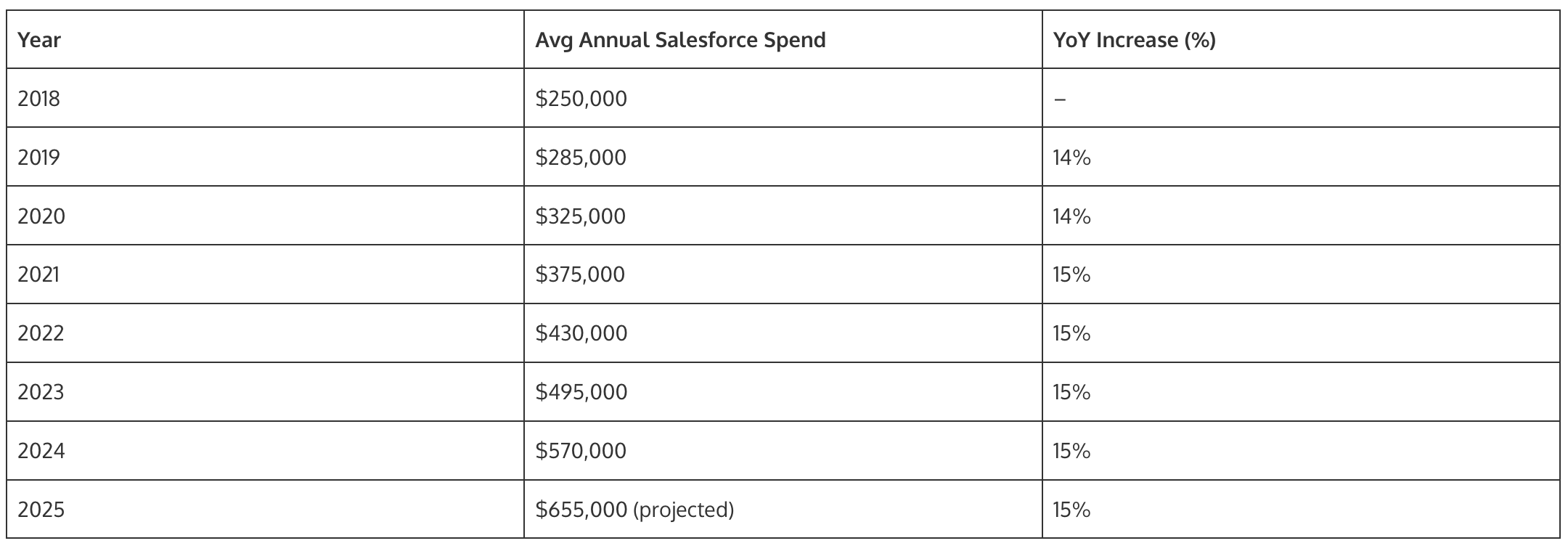Salesforce is one of the most recognizable names in enterprise software — a pioneer in Software-as-a-Service (SaaS) and the first to deliver CRM entirely via the cloud. Since its founding in 1999, Salesforce has redefined how organizations manage sales, marketing, service, and increasingly, automation and AI.
But how did Salesforce become the global cloud CRM powerhouse it is today? And why is optimizing your Salesforce environment now more critical than ever?
In 1999, Marc Benioff — a former Oracle executive — launched Salesforce from a San Francisco apartment. His mission was to “end software” as the enterprise knew it. At the time, CRM systems were hosted on-premise, costly to maintain, and difficult to scale. Benioff’s revolutionary idea was to deliver CRM through the internet — on-demand, subscription-based, and accessible to any employee with a browser.
Salesforce launched its first CRM product in 2000, and the concept of SaaS began gaining traction. Its slogan, “No Software,” reflected its bold challenge to traditional enterprise licensing models. The user-friendly, cloud-based experience immediately distinguished it from legacy platforms.
By 2004, Salesforce went public on the New York Stock Exchange under the ticker symbol CRM. Its success helped establish the foundation for today’s SaaS economy, influencing how companies across all industries consume and manage software. The IPO raised $110 million, and Salesforce quickly positioned itself as a dominant force in customer-centric business solutions.
Salesforce has consistently expanded through innovation and acquisition:
Its product strategy has steadily evolved from standalone CRM to a broad platform encompassing customer data, AI, analytics, and business automation. With every acquisition, Salesforce has increased its relevance across the enterprise, transforming from a CRM vendor into a comprehensive digital operating system.
The company’s annual Dreamforce conference has also become a tech industry staple — showcasing product innovations, setting vision for the future of customer experience, and uniting over 100,000 attendees both in-person and online.
Today, Salesforce has over 150,000 customers globally, and its products touch nearly every industry — from retail and healthcare to financial services and manufacturing. The platform supports millions of users every day, from SMBs to the Fortune 100.
Salesforce also powers thousands of ISVs and partners via its AppExchange marketplace, making it a vital backbone for business applications across industries. Its extensibility and vast developer community have made it a go-to platform for building customized enterprise solutions.
This makes it the central nervous system for many enterprise go-to-market operations — but also one of the most complex and costly environments to manage. Enterprises often embed Salesforce deep into their operations, relying on it for marketing automation, service workflows, compliance tracking, and advanced customer segmentation.
As Salesforce adoption scales, so too do the costs. Companies often over-license, under-utilize features, or pay for modules they don’t need. Without optimization, even mid-sized businesses can spend millions annually.

This steep upward trend underscores the need for companies to regularly evaluate their license usage, contract terms, and ROI. Without clear visibility and governance, Salesforce environments can become bloated and inefficient.
Many organizations fall into the trap of renewing existing licenses without reviewing whether they are still needed or optimally configured. Others introduce new tools within the Salesforce ecosystem without integrating them properly, creating cost and data redundancies.
The cost of Salesforce is not just in the licensing — it’s in implementation, administration, change management, training, and integration. All of these costs compound over time, especially without centralized procurement governance.
Salesforce revolutionized the enterprise software world by showing that SaaS could scale globally — and has become one of the most powerful platforms in business. Its growth story is remarkable, but it also brings challenges of cost control, licensing complexity, and strategic management.
As Salesforce continues to expand into AI, automation, and vertical industry solutions, now is the time for organizations to ensure their environments are rightsized, cost-effective, and fit for purpose.
The key takeaway is this: just because Salesforce is ubiquitous doesn’t mean it’s automatically optimized. Without active oversight, businesses risk falling into a cycle of growing spend with diminishing returns.
Because while Salesforce may have ended the age of software, the age of smart, strategic license management is only beginning.